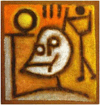The primary care physician in the early diagnosis of systemic sclerosis: the cornerstone of recognition and hope
- PMID: 24366221
- PMCID: PMC3872337
- DOI: 10.1097/MAJ.0b013e3182a55d24
The primary care physician in the early diagnosis of systemic sclerosis: the cornerstone of recognition and hope
Abstract
Systemic sclerosis (SSc) is a disease of unknown causative factor that manifests as a heterogenous group of multiorgan system manifestations and is characterized by vasculopathy and fibrosis of the skin and internal organs, with mortality related to pulmonary, cardiac, renal or gastrointestinal involvement. The prevalence of SSc may be underestimated in the general population. Cases are often undiagnosed or misdiagnosed, particularly cases with mild or no skin manifestations. Because of late referrals to rheumatologic care, many moderate-to-severe cases progress to irreversible end-organ damage that might have been prevented by early diagnosis. Early diagnosis of SSc with initiation of appropriate treatment is essential, with great impact on morbidity and mortality. This review examines presenting features, ensuing complications and treatment providing a focus on SSc as a treatable disease. Primary care providers play a pivotal role in recognizing initial symptoms associated with SSc and securing early diagnosis through early referral to specialists.
Conflict of interest statement
LAS has served as a consultant and/or clinical investigator for Actelion Pharmaceuticals, Gilead Sciences and Questcor and has received grant and in-kind support from EUSTAR, the Federation of European Scleroderma Associations, Pulmonary Hypertension Association, Scleroderma Foundation, the Scleroderma Society UK, World Scleroderma Foundation, Actelion Pharmaceuticals Ltd, Boehringer Ingelheim, Celgene Corp, Centocor, InterMune, Sigma-Tau Pharmaceutical and United Therapeutics. JHM has no conflicts of interest to declare. MD is an employee of Alexion Pharmacuticals and a former employee of Janssen Research & Development, Inc., a subsidiary of Johnson & Johnson and owns stock in Johnson & Johnson and has also served as a consultant or investigator for Actelion Pharmaceuticals.
Figures








References
-
- Saketkoo LA, Escorpizo R, Keen KJ, Fligelstone K, Distler O, on behalf of EUSTAR International Classification of Functioning, Disability and Health (ICF) Core Set Development to Assist ICF Core Set Construction in Systemic Sclerosis and other Rheumatic Diseases: a EUSTAR Initiative. Rheumatology (Oxford) 2012 Aug;:160–166. - PubMed
-
- Meier FM, Frommer KW, Dinser R, Walker UA, Czirjak L, Denton CP, Allanore Y, Distler O, Riemekasten G, Valentini G, Müller-Ladner U, EUSTAR Co-authors Update on the profile of the EUSTAR cohort: an analysis of the EULAR Scleroderma Trials and Research group database. Ann Rheum Dis. 2012 Aug;71(8):1355–1360. - PubMed
-
- Saketkoo LA, Escorpizo R, Keen KJ, Fligelstone K, Distler O. Steps to Linking Systemic Sclerosis to the World Health Organization’s International Classification of Functioning, Disability and Health. Rheumatology. 2012 Feb;51(2):i21–i22. - PubMed
-
- Hugle T, Schuetz P, Daikeler T, et al. Late-onset systemic sclerosis--a systematic survey of the EULAR scleroderma trials and research group database. Rheumatology (Oxford) 2011;50:161–165. - PubMed
-
- Muller H, Rehberger P, Gunther C, Schmitt J. Determinants of Disability, Quality of Life and Depression in Dermatological Patients with Systemic Scleroderma. Br J Dermatol. 2011 - PubMed
Publication types
MeSH terms
Grants and funding
LinkOut - more resources
Full Text Sources
Other Literature Sources
Medical

